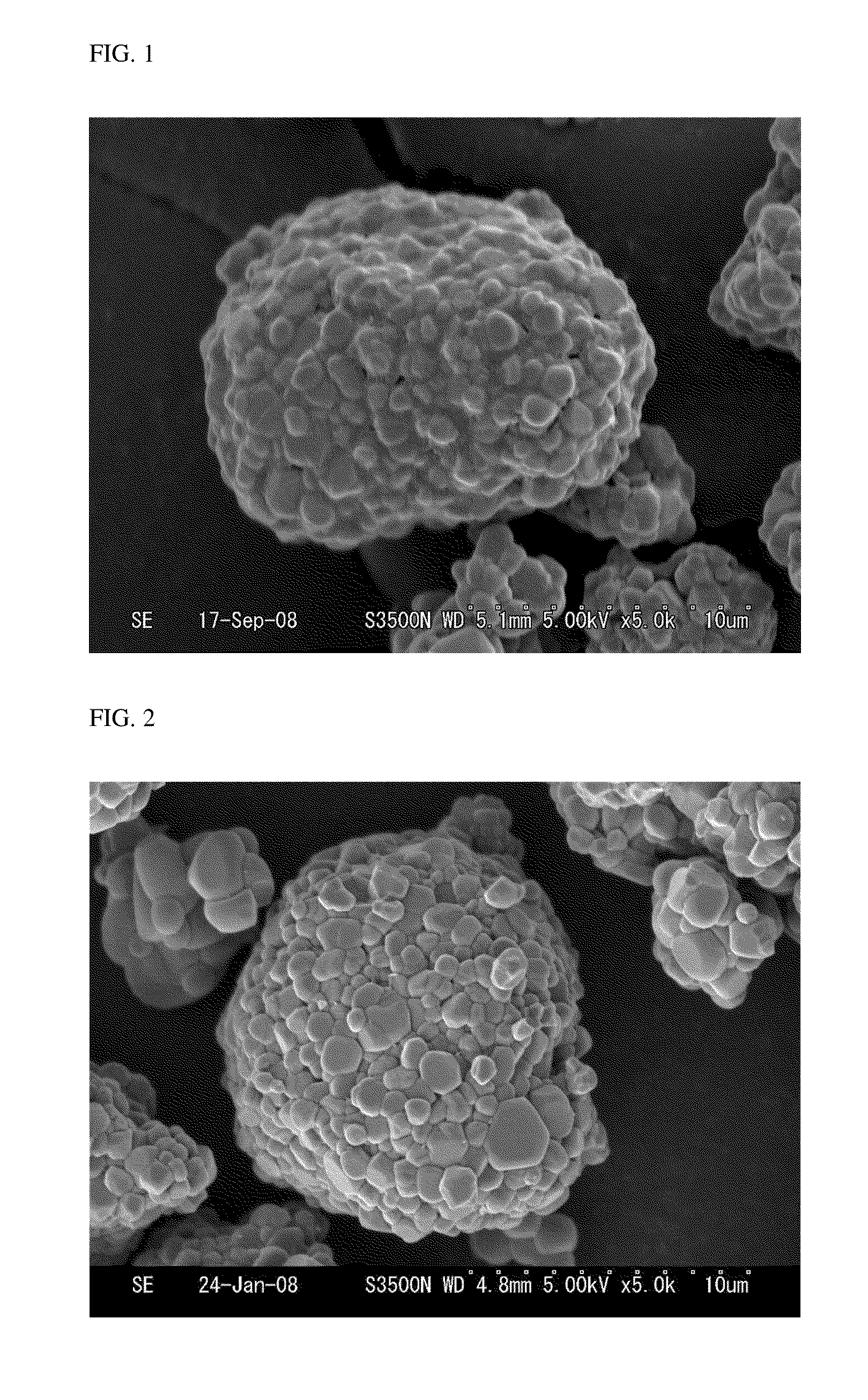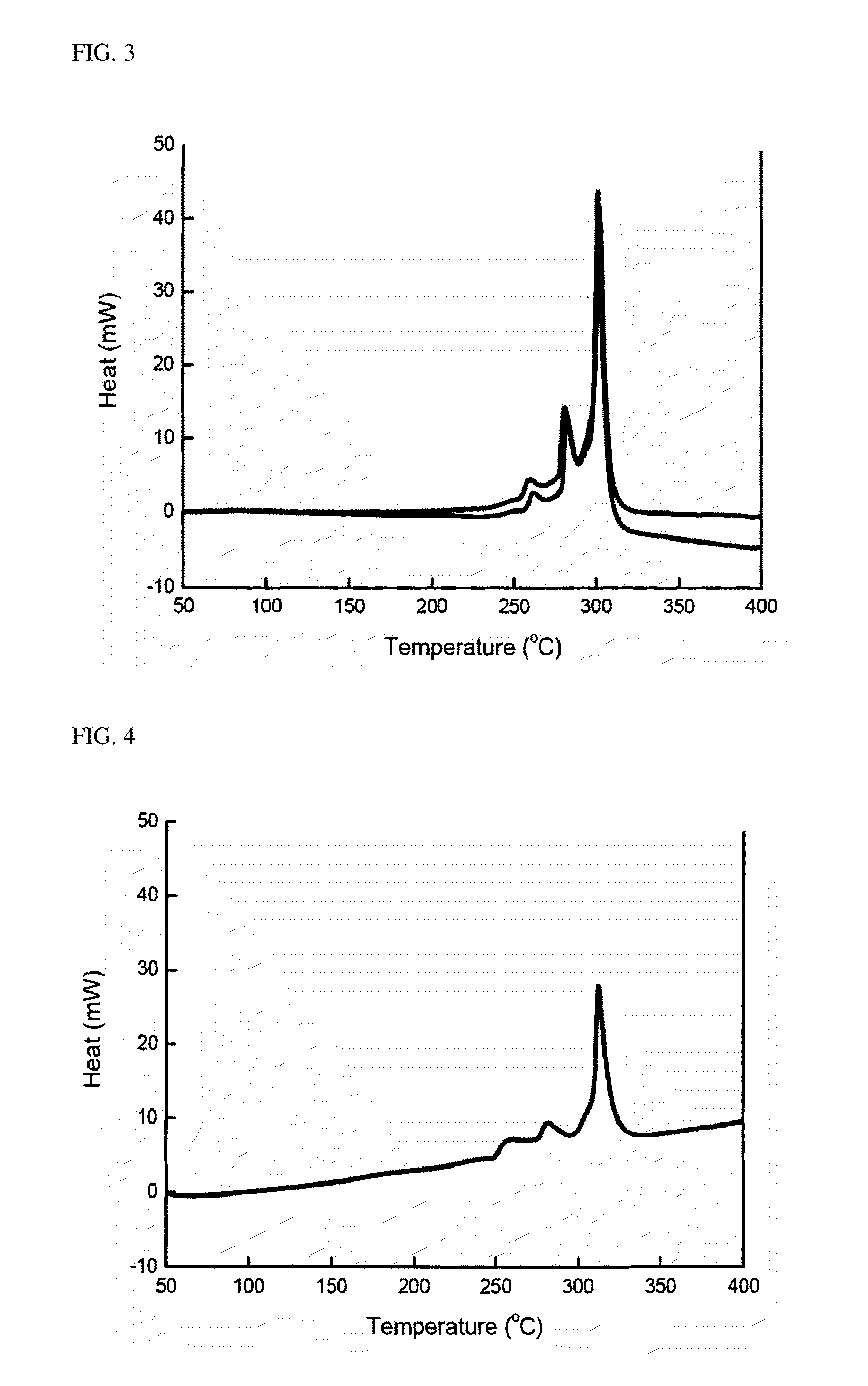Cathode active material for lithium secondary battery
a lithium secondary battery and active material technology, applied in the direction of electric vehicles, cell components, transportation and packaging, etc., can solve the problems of limited large-scale use as a power source in electric vehicle applications, low safety, high cost, etc., and achieve the effect of high capacity of the battery and favorable enhancement of high temperature stability
- Summary
- Abstract
- Description
- Claims
- Application Information
AI Technical Summary
Benefits of technology
Problems solved by technology
Method used
Image
Examples
example 2
[0076]The same procedure as described in Example 1 was repeated to treat the active material except that a relative weight ratio of LiNi0.53Mn0.27CO0.20O2: polypyrrole was 100:1.
example 3
[0077]The same procedure as described in Example 1 was repeated to treat the active material except that a relative weight ratio of LiNi0.5Mn0.3Co0.2O2: polypyrrole was 100:2.
experimental example 1
[0079]For each of the active materials obtained in Example 1 and Comparative Example 1, a surface of the active material was observed through SEM. Observed results of the materials of Example 1 and Comparative Example 1 are shown in FIGS. 1 and 2, respectively.
PUM
| Property | Measurement | Unit |
|---|---|---|
| particle diameter D50 | aaaaa | aaaaa |
| particle diameter D90 | aaaaa | aaaaa |
| temperature | aaaaa | aaaaa |
Abstract
Description
Claims
Application Information
 Login to View More
Login to View More - R&D
- Intellectual Property
- Life Sciences
- Materials
- Tech Scout
- Unparalleled Data Quality
- Higher Quality Content
- 60% Fewer Hallucinations
Browse by: Latest US Patents, China's latest patents, Technical Efficacy Thesaurus, Application Domain, Technology Topic, Popular Technical Reports.
© 2025 PatSnap. All rights reserved.Legal|Privacy policy|Modern Slavery Act Transparency Statement|Sitemap|About US| Contact US: help@patsnap.com



